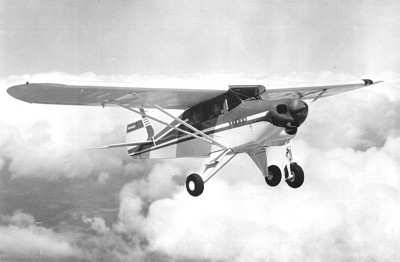Wed, Dec 31, 2014
NTSB Said Carbon Monoxide Detected In Pilot's System, But Not In Sufficient Amount To Cause Incapacitation
The NTSB has released a probable cause report from an accident that occurred October 28, 2013, that resulted in the fatal injury of the pilot of a Piper PA-22-150 Tri-Pacer. Pilot error is cited as the cause of the accident.

According to the report, the pilot was flying his airplane to a hunting location. No one witnessed the departure or accident. A postaccident examination of the accident site indicated that the airplane departed the runway and then impacted the ground in a wooded area about 600 feet from the approximate midpoint of the runway. A postimpact fire occurred. An 8-knot crosswind was recorded about the time of the accident. The loaded weight of the airplane could not be determined due to fire damage. Postaccident examinations of the airplane revealed no mechanical anomalies that would have precluded normal operation. Although the toxicology report showed that the pilot was exposed to carbon monoxide, the level of exposure would only have resulted in a slight headache.
A review of the airplane's maintenance logbooks revealed that the airplane's tires were replaced with larger tires in accordance with a supplemental type certificate the day before the accident. However, the change would have had a small effect on the performance of the airplane. The evidence indicates that the pilot likely lost airplane control during takeoff.
The 51-year old pilot held an FAA private pilot certificate with an airplane single-engine land and instrument ratings. The pilot's most recent third-class FAA medical certificate was issued on April 23, 2013, without any limitations. On the application for that medical certificate, the pilot reported that he had accumulated 625 hours of total flight time and 85 hours in the six months prior to the application. The pilot recorded in his logbook that he had accumulated 719.9 hours of total flight time and 12.8 hours of flight time in the 30 days prior to the accident. The logbook contained a tailwheel endorsement for the pilot dated October 6, 2012. The logbook showed that the pilot's latest flight review endorsement was dated September 12, 2013.
The NTSB determined that the probable cause of this accident as follows was the pilot's loss of airplane control during takeoff.
(Image from file. Not accident airplane)
More News
Terminal Radar Service Area Airspace surrounding designated airports wherein ATC provides radar vectoring, sequencing, and separation on a full-time basis for all IFR and participa>[...]
Very High Frequency (VHF) The frequency band between 30 and 300 MHz. Portions of this band, 108 to 118 MHz, are used for certain NAVAIDs; 118 to 136 MHz are used for civil air/grou>[...]
“From approximately November 2021 through January 2022, Britton-Harr, acting on behalf of AeroVanti, entered into lease-purchase agreements for five Piaggio-manufactured airc>[...]
Also: Virtual FLRAA Prototype, IFR-Capable Autonomous A/C, NS-32 Crew, Golden Dome Missile Defense Bombardier announced that the first production Global 8000 successfully completed>[...]
Aero Linx: The 1-26 Association (Schweizer) The Association’s goal is to foster the helpfulness, the camaraderie, and the opportunity for head-to-head competition that is fou>[...]
 ANN's Daily Aero-Term (05.29.25): Terminal Radar Service Area
ANN's Daily Aero-Term (05.29.25): Terminal Radar Service Area ANN's Daily Aero-Term (05.30.25): Very High Frequency (VHF)
ANN's Daily Aero-Term (05.30.25): Very High Frequency (VHF) Aero-News: Quote of the Day (05.30.25)
Aero-News: Quote of the Day (05.30.25) Airborne 05.23.25: Global 8000, Qatar B747 Accepted, Aviation Merit Badge
Airborne 05.23.25: Global 8000, Qatar B747 Accepted, Aviation Merit Badge ANN's Daily Aero-Linx (05.30.25)
ANN's Daily Aero-Linx (05.30.25)



